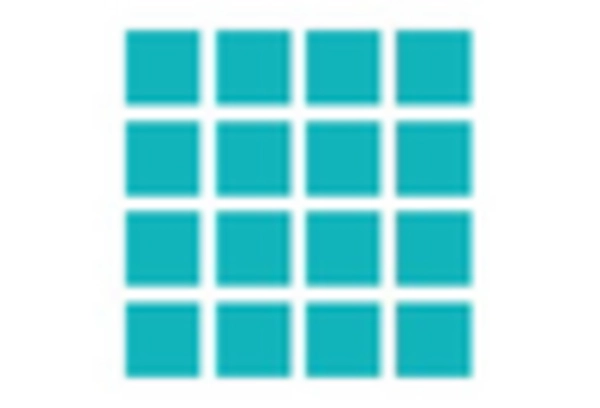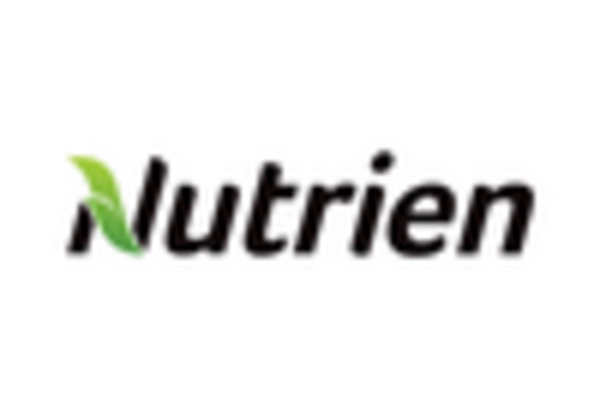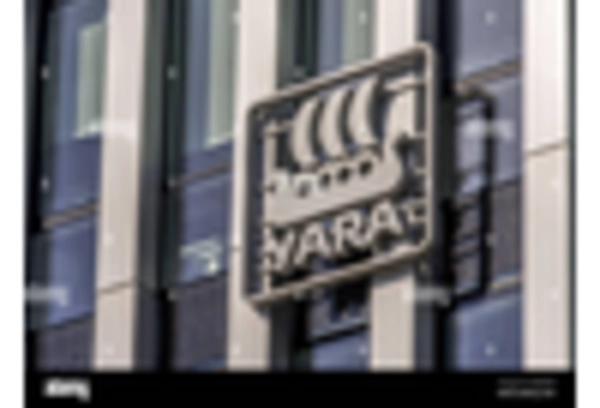Rising Health Consciousness
The dicalcium phosphate market is benefiting from a growing trend of health consciousness among consumers in Europe. As individuals become more aware of the importance of nutrition, there is an increasing demand for dietary supplements that contain essential minerals. Dicalcium phosphate, being a rich source of calcium and phosphorus, is gaining traction in the health supplement sector. The dietary supplement market in Europe is expected to reach €30 billion by 2026, with a significant portion attributed to mineral supplements. This trend is likely to drive the demand for dicalcium phosphate, as manufacturers seek to incorporate it into their formulations to meet consumer preferences for health-oriented products. Additionally, the rise of preventive healthcare is encouraging consumers to invest in supplements that support bone health and overall well-being, further enhancing the market's growth prospects.
Increasing Use in Fertilizers
The dicalcium phosphate market is experiencing a notable increase in demand due to its application in fertilizers. As European agriculture seeks to enhance soil quality and crop yield, dicalcium phosphate serves as a vital source of phosphorus and calcium. The European fertilizer market is projected to grow at a CAGR of approximately 3.5% from 2025 to 2030, indicating a robust demand for nutrient-rich fertilizers. This growth is driven by the need for sustainable agricultural practices and the rising awareness of soil health. Farmers are increasingly adopting dicalcium phosphate as a cost-effective solution to improve crop productivity, thereby propelling the market forward. Furthermore, the shift towards organic farming practices in Europe is likely to further boost the demand for dicalcium phosphate, as it aligns with the principles of sustainable agriculture.
Expansion of the Pet Food Sector
The dicalcium phosphate market is witnessing growth due to the expansion of the pet food sector in Europe. As pet ownership continues to rise, there is an increasing demand for high-quality pet food that meets nutritional standards. Dicalcium phosphate is recognized for its role in providing essential minerals for pets, particularly in promoting bone health. The European pet food market is projected to grow at a CAGR of 4% from 2025 to 2030, indicating a robust demand for nutrient-rich formulations. This growth is driven by pet owners' desire to provide balanced diets for their animals, leading to a higher incorporation of dicalcium phosphate in pet food products. Furthermore, the trend towards premium and specialized pet food products is likely to enhance the demand for dicalcium phosphate, as manufacturers seek to differentiate their offerings in a competitive market.
Technological Advancements in Production
The dicalcium phosphate market is influenced by technological advancements in production processes. Innovations in manufacturing techniques are enabling the production of dicalcium phosphate with higher purity and efficiency. This is particularly relevant in Europe, where stringent quality standards are enforced. The adoption of advanced technologies, such as continuous production methods and improved purification techniques, is likely to enhance the overall quality of dicalcium phosphate. As a result, manufacturers can meet the increasing demand for high-quality products in various applications, including food, pharmaceuticals, and animal feed. The market for high-purity dicalcium phosphate is expected to grow, driven by the need for compliance with regulatory standards and consumer preferences for premium products. This trend may lead to increased investments in research and development, further propelling the market forward.
Sustainability Initiatives in Agriculture
The dicalcium phosphate market is positively impacted by sustainability initiatives in agriculture across Europe. As environmental concerns gain prominence, there is a growing emphasis on sustainable farming practices that minimize chemical inputs. Dicalcium phosphate, being a natural mineral, aligns with these sustainability goals, making it an attractive option for farmers. The European Union's commitment to reducing carbon emissions and promoting organic farming is likely to drive the adoption of dicalcium phosphate in agricultural practices. This shift towards sustainability is expected to create new opportunities for the dicalcium phosphate market, as farmers seek eco-friendly alternatives to synthetic fertilizers. Additionally, the increasing consumer demand for sustainably produced food is likely to encourage the use of dicalcium phosphate, further enhancing its market potential.


















Leave a Comment